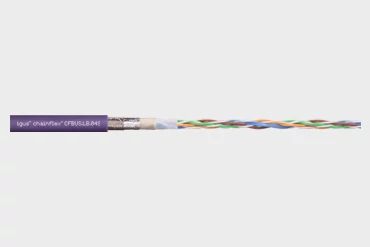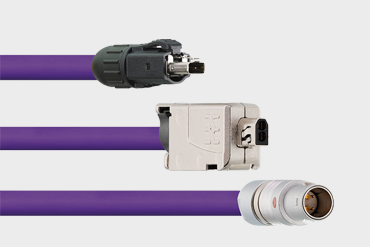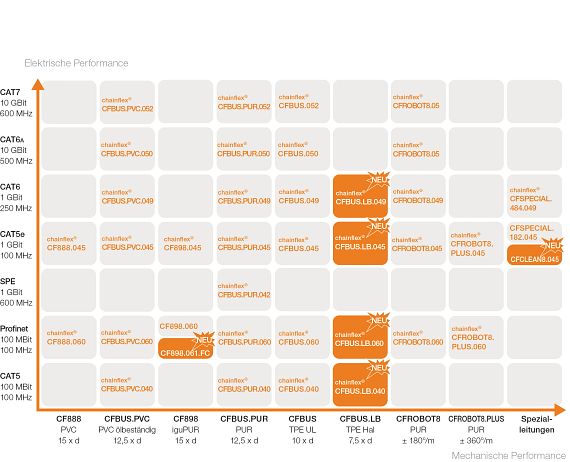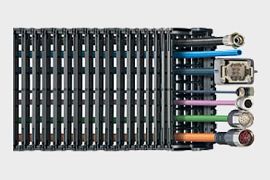Ethernet is the most widely used standard for local area network (LAN) cabling. Although transmission rates of up to 400 Gbps are currently specified, the current state of the art allows a maximum speed of 40 Gbps. Ethernet cables are divided into categories (Cat) from CAT3 to CAT8. While CAT3 is generally no longer used, CAT5-CAT7 are common in the industry. However, the CAT5e standard is still the most widely used in automation technology. PROFINET and ETHERCAT, which are based on the Ethernet standard, are also derived from it.
Ethernet is the standard in automation technology. Both mechanical engineering and image processing systems use Ethernet-based bus systems. The high data transmission also makes it possible to implement requirements in the area of Industry 4.0.


Ethernet cables are available for different applications. Ethernet cables are often fixed in machines and systems so that cost-effective cables with a solid conductor or a flexible conductor consisting of seven strands can be selected.
Applications in energy chains require Ethernet cables with fine stranded wires. A cable structure tailored to movement in energy chains is also necessary to guarantee secure data transmission over the years. This is why chainflex cables have established themselves, especially in equipment and machines such as robots, packaging machines, production machines, and machine tools.




Monday to Friday from 8am - 8pm.
24h